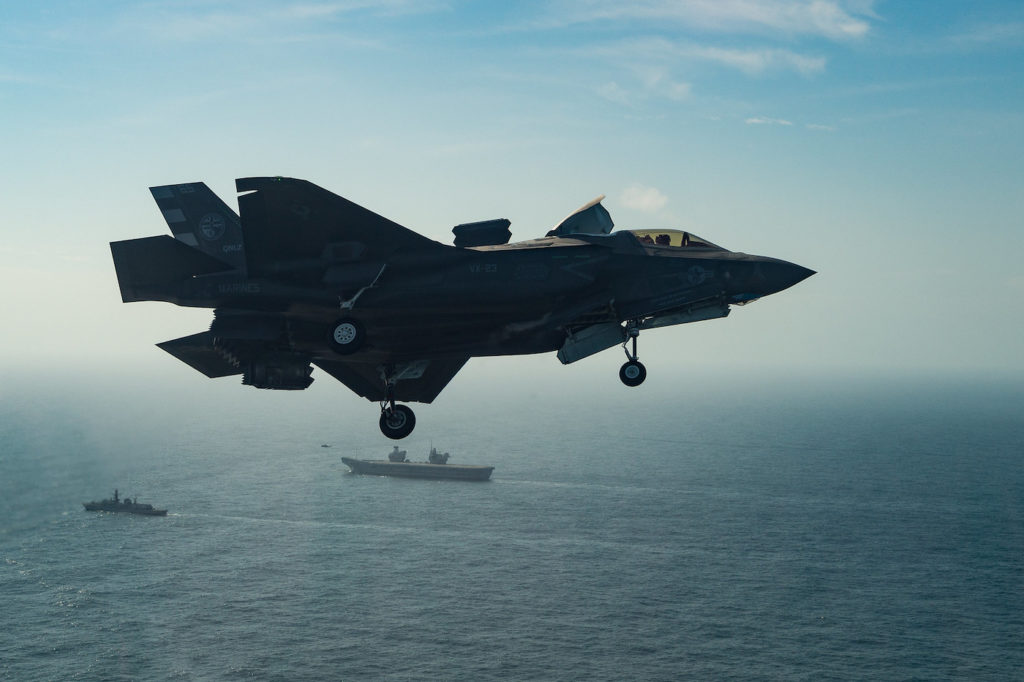
The F-35B Lightning II, pictured here during a landing demonstration on the HMS Queen Elizabeth, demonstrated its ability to share live data in real time with the IAMD Battle Command System (IBCS) during Orange Flag Evaluation (OFE) 19-2 at Palmdale, Calif., and Fort Bliss, Texas. Photo: Lockheed Martin
Stakeholders recently demonstrated the ability to integrate F-35 Joint Strike Fighter track data into the Army’s Integrated Air and Missile Defense (IAMD) Battle Command System (IBCS) during the June Orange Flag Evaluation 19-2 event, Lockheed Martin said Tuesday.
The F-35’s prime contractor noted this was the first time live F-35 track data was sent to IBCS through the F-35 ground station and F-35 IBCS adaption kit, both developed by Lockheed Martin. The company disclosed the milestone here during the annual Space and Missile Defense Symposium.
Transferring the data allowed IBCS to receive and develop fire control quality composite tracks during the exercise. This made the F-35 a more useful sensor for air and missile defense systems.
The company underscored this “enables multi-domain operations and the detection of threats that could challenge ground-based sensors.”
Orange Flag Evaluation 19-2 took place in Palmdale, Calif., and Fort Bliss, Texas.
“This demonstration represents a significant growth in capability for the Army IAMD program and Army for multi-domain operations. The capability creates additional battlespace awareness, and the ability to track incoming targets and take action, if necessary,” Scott Arnold, vice president and deputy of Integrated Air and Missile Defense at Lockheed Martin Missiles and Fire Control, said in a statement.
Ultimately, this shows the F-35’s sensors and connectivity allow it to gather and “seamlessly share” critical information to enable more joint force protection, Arnold added. The demonstration comes less than a year after Lockheed selected Harris to upgrade the F-35’s integrated core processor, which will increase the aircraft’s processing power by 25 times, with upgrades slated to begin in 2023.
The company said this is the latest demonstration of the IBCS’ ability to gather sensor data from various platforms and add building blocks to the future Army IAMD force.
Lockheed Martin also noted the F-35 ground station has been repositioned to the White Sands Missile Range in New Mexico to continue supporting follow on F-35 integration tests during the AIAMD developmental testing.
IBCS is being developed by Northrop Grumman to serve as the Army’s future integrated command and control platform. The Army plans for it to move into limited user tests in 2020 and initial production in 2022.